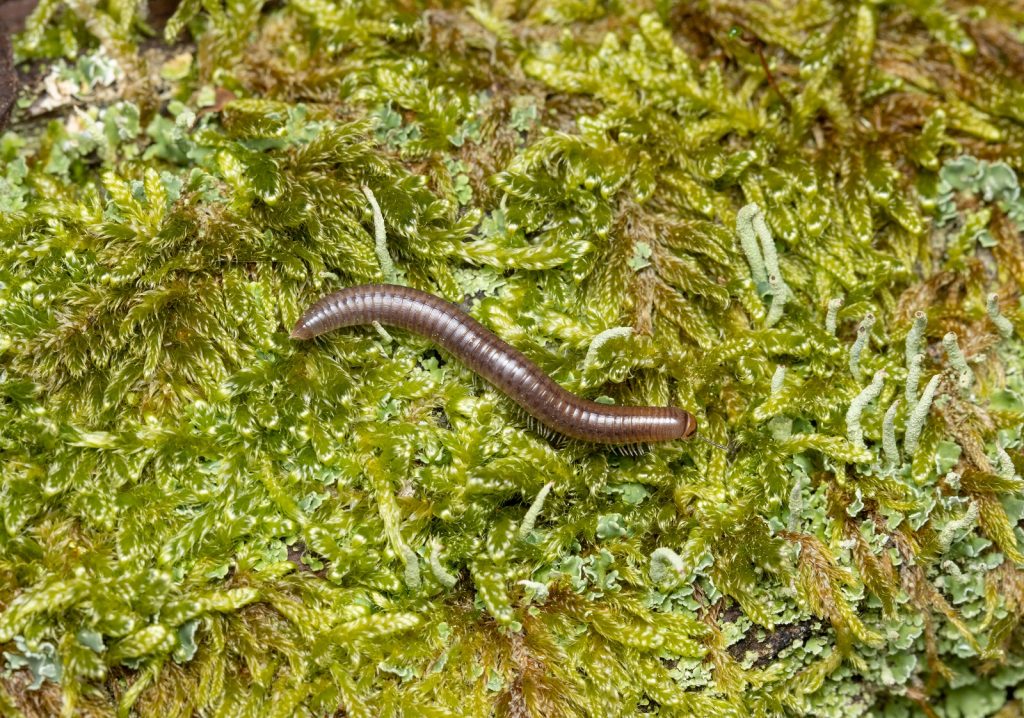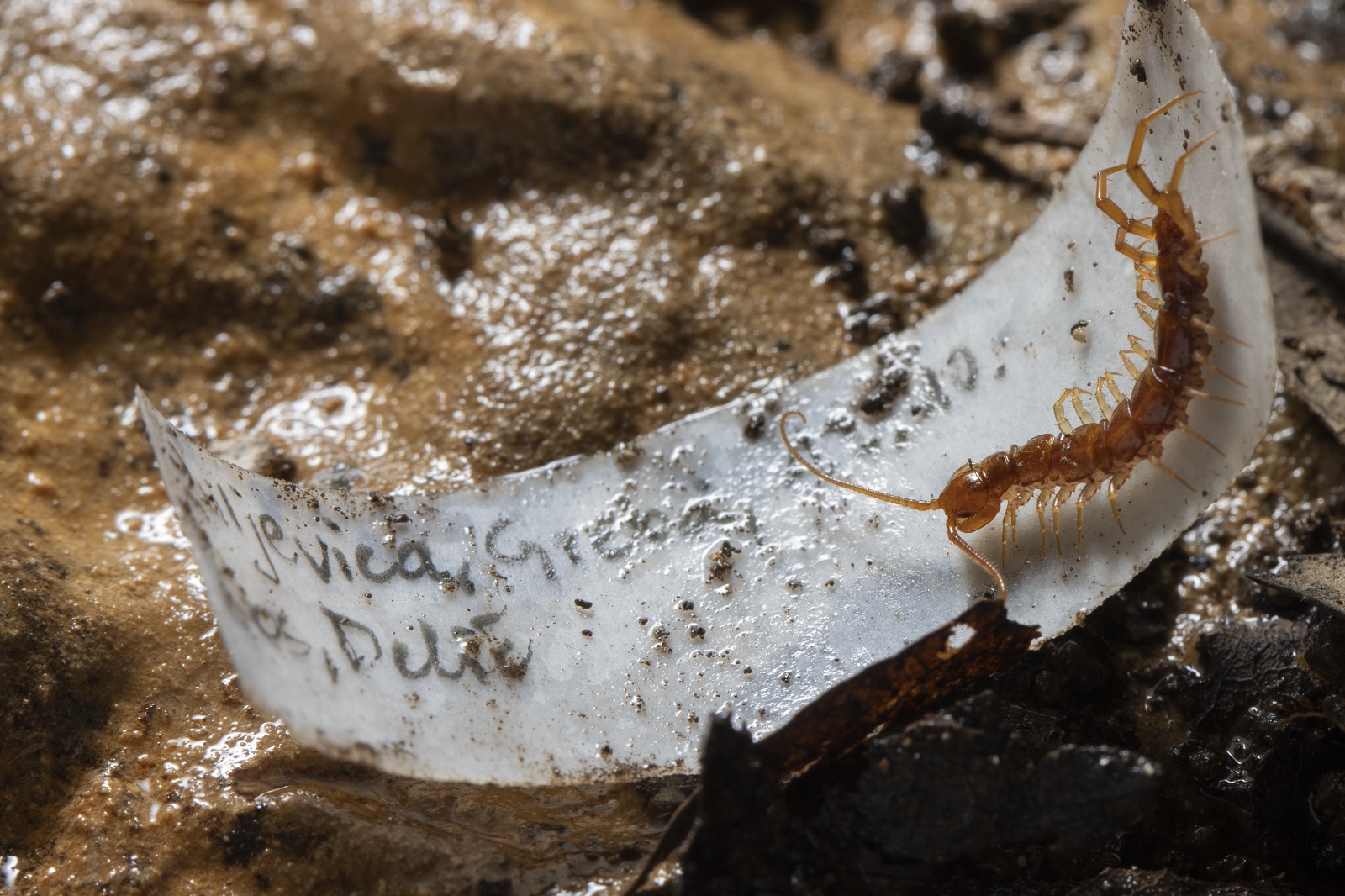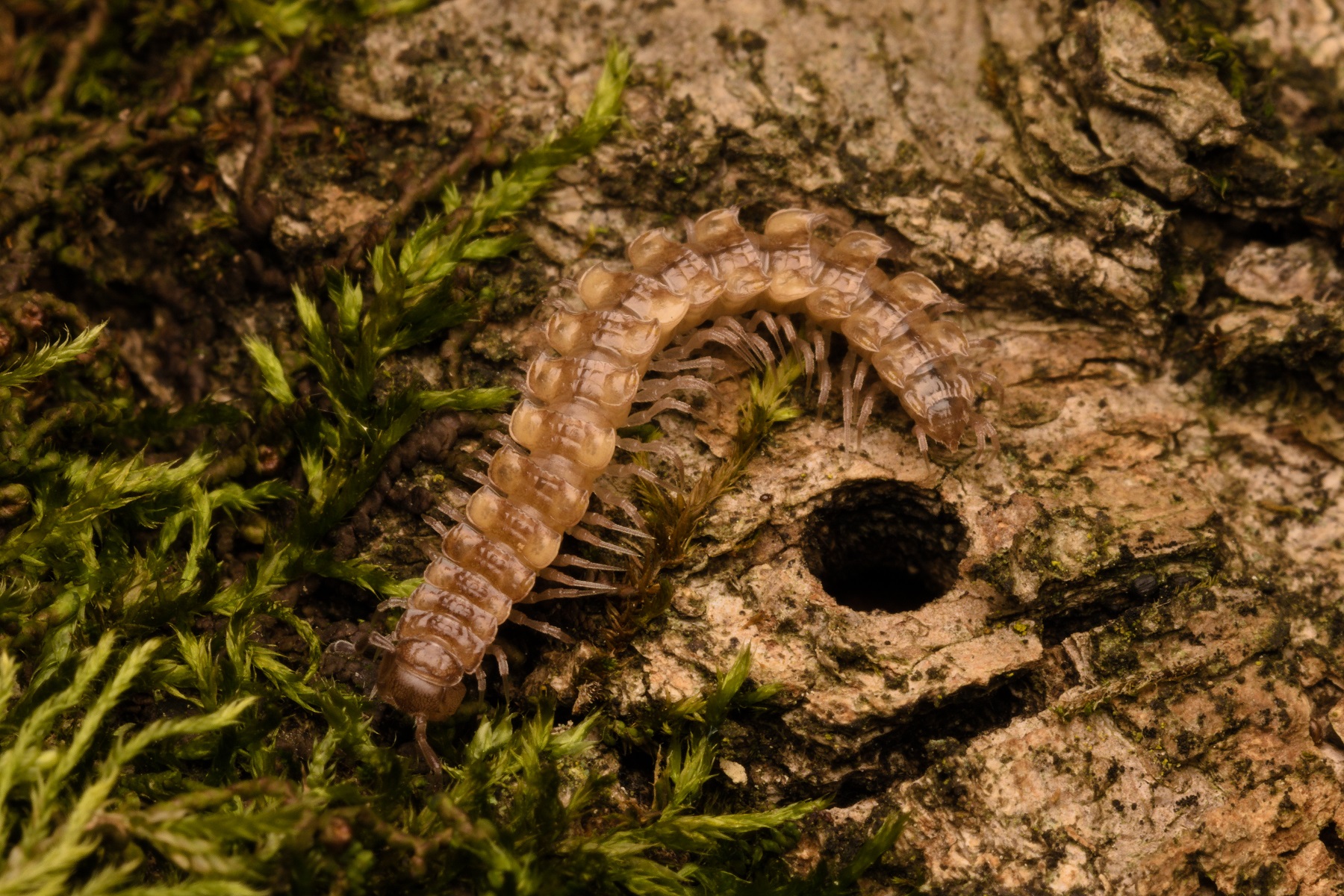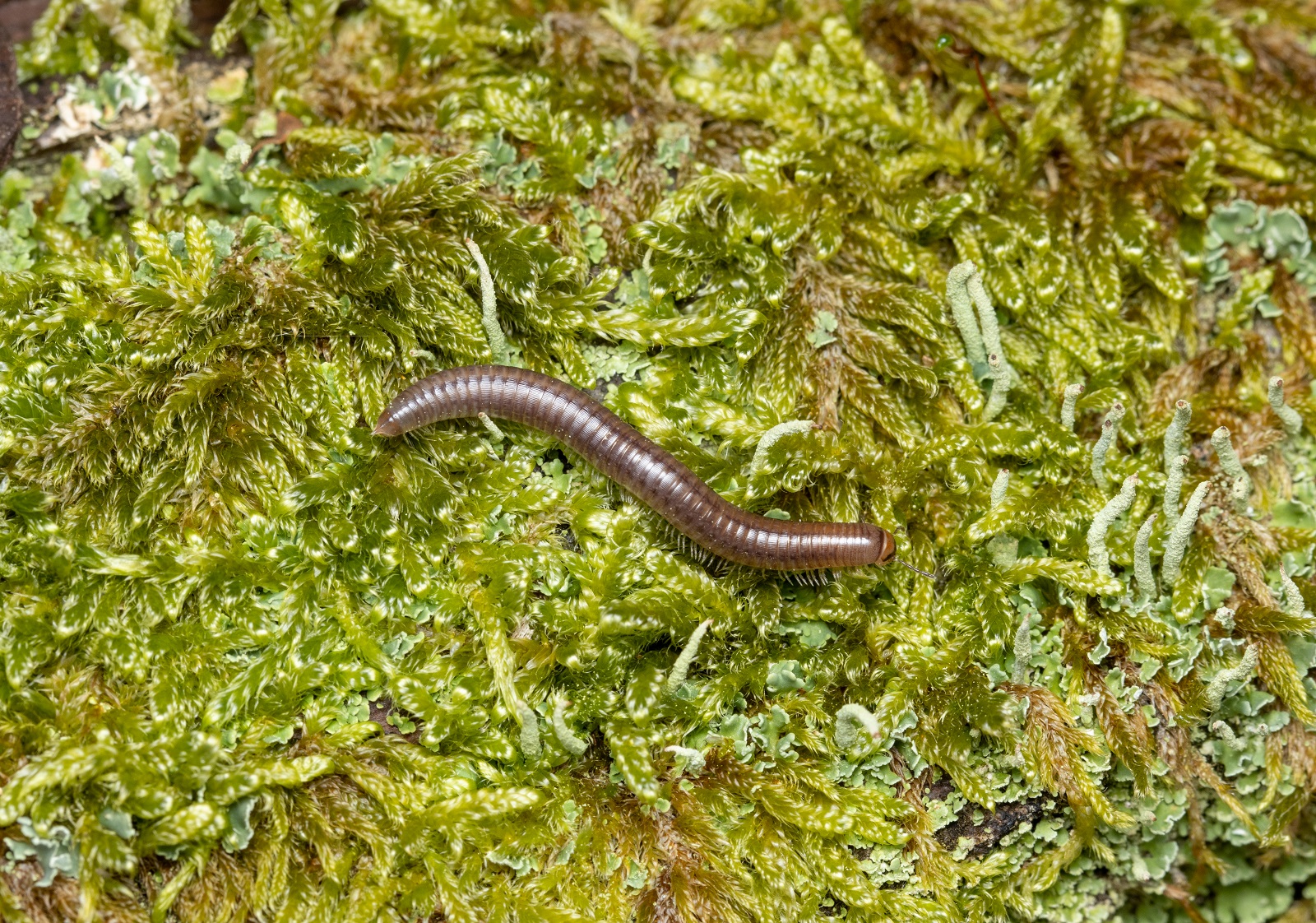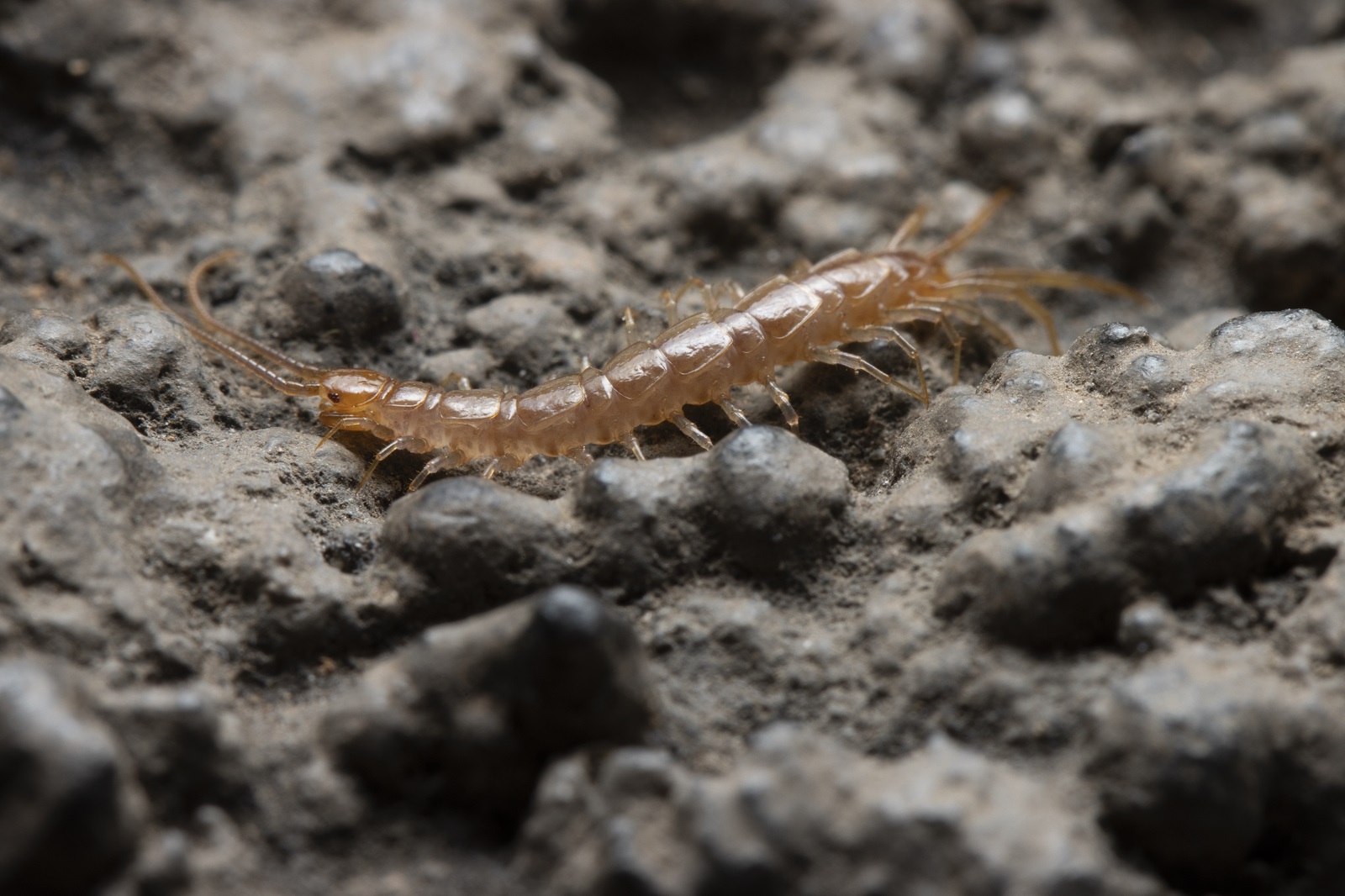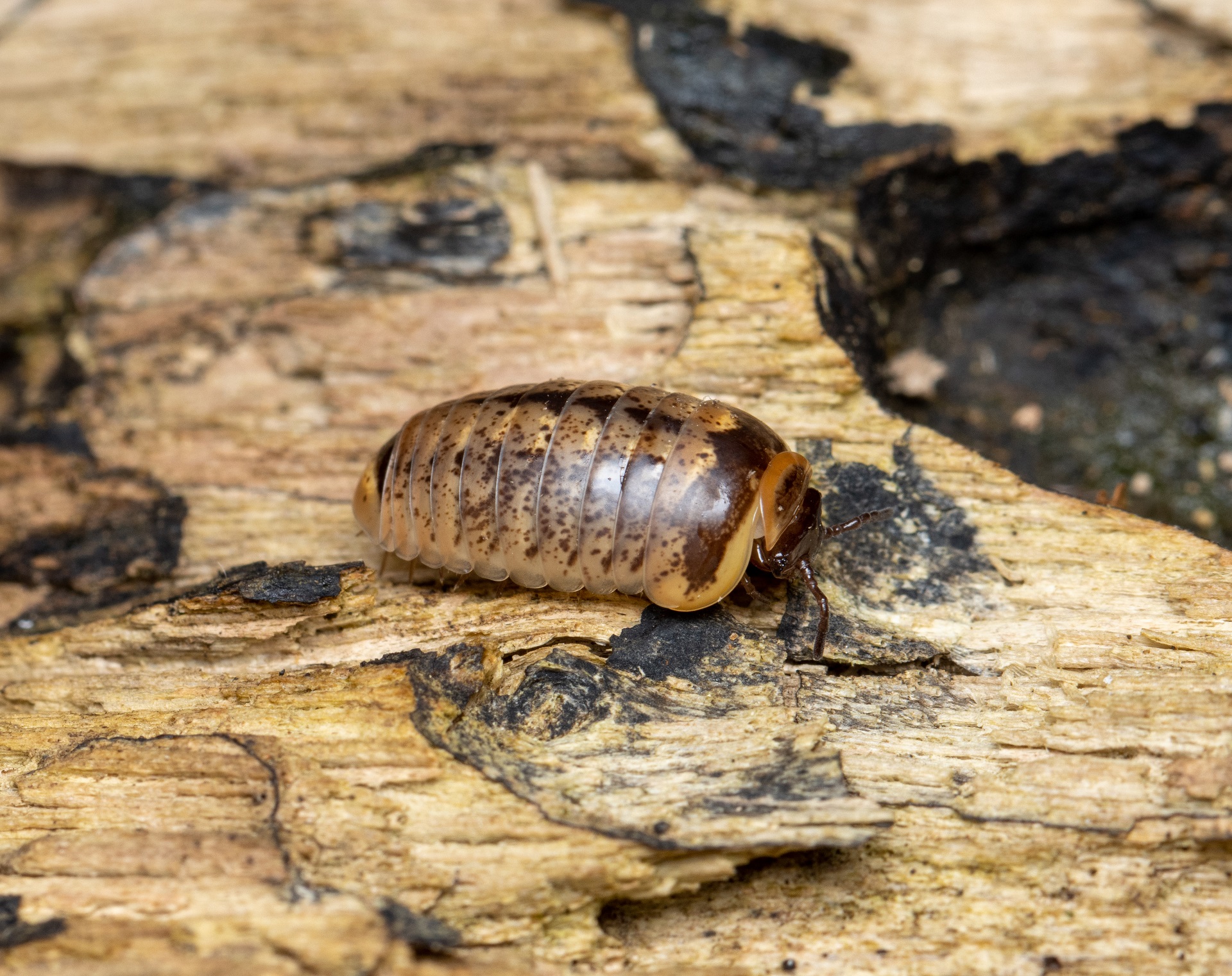- Myriapods
Julida
The body of snake millipedes as in other myriapods consists of a head and an elongated trunk composed of numerous metameric segments with walking legs. The body is cylindrical in cross-section and measures 10 to 120 mm in length. The chitinous exoskeleton is strongly calcified.
The head bears a pair of short antennae. The mouthparts are a pair of large mandibles and two pairs of maxillae, which are fused into a gnathochilarium, a large plate-like structure on the basal side of the head. The eyes are either reduced or in the form of small clusters of ocelli.
The trunk usually consists of more than 30 segments. The majority of segments are diplosomites, fused pairs of true segments, each bearing two pairs of legs which originate ventrally. The exception are the first three segments behind the head which are single segments. The first segment is a large saddle-like collum which can partially cover the head and the second segment. In males the legs on the 7th segment are modified into gonopods which serve to transfer packets of spermatozoa termed spermatophores.
The snake millipedes inhabit various shady and humid terrestrial habitats. They are frequently encountered in forests, where they can be found beneath rocks and wood bark, in leaf litter, in damp moss and in decomposing wood. Certain species are found also in more anthropogenic habitats such as damp cellars and among construction materials and debris.
They are herbivores feeding on decaying plant material and as such are important decomposers. They are able to curl into a spiral and emit noxious or toxic secretions as defense mechanisms against predators.
During mating the male coils around the female and transfers the spermatophore to the female’s genital openings with his gonopods. The genital openings of millipeds are on the 3rd segment of their trunk. The female lays eggs into the earth. Juvenile animals with less body segments than the adults hatch from the eggs. Juveniles molt numerous times before they reach sexual maturity. During each molt new segments of the trunk are added until their final number in the adults is reached.
More photos
Related arthropods
Authors
- Urban Bogataj,
- Gregor Bračko,
- Teo Delič,
- Cene Fišer,
- Žiga Fišer,
- Rok Kostanjšek,
- Rudi Verovnik,
- Miloš Vittori,
- Valerija Zakšek.
Students Vito Ham, Vesna Jurjevič, Gaj Kušar, and Adrijan Samuel Stell Pičman also participated in the project.
